On the first weekend of my arrival in Freinsheim this past September, my relatives and I sallied forth to hike the vineyards in celebration of the annual Freinsheim Weinwanderung.
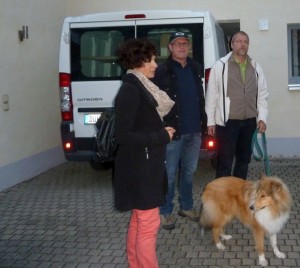
Ina, Manfred, Matthias and Lenny (the collie) on the first night of the Weinwanderung
Friday evening, as we headed out of town to ascend to a hilltop vantage point and await the opening night fireworks (an occasion that included the sampling of several wines), my relatives encountered friends of theirs, so we stopped to talk.
“Here is our American relative, Claire Gebben,” they said (I think), introducing me. “She’s written a book about her ancestors from Freinsheim, who emigrated from here to America in the 19th century.”
“Oh, like the ‘Kings of Kallstadt!!” All eyes turned to me. “Have you seen the film? It’s really really great.”
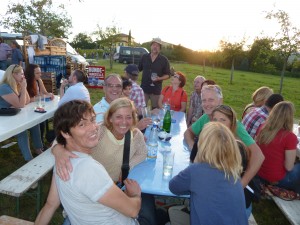
Sunset on the Weinwanderung in Freinsheim
I had not seen the film. I wasn’t even sure what they were talking about. But as the three-day celebration of hiking and wine sampling wore on, over and over again we encountered friends who, when they were introduced to me and heard my story, warmed eagerly to the subject of the “Kings of Kallstadt.” I couldn’t understand half of what was said, but the delighted laughter and serious conversation that ensued was certainly intriguing.
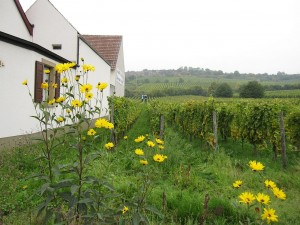
Vineyards on the outskirts of Kallstadt
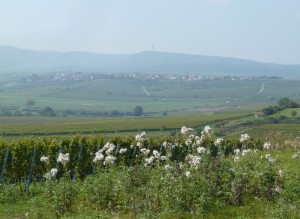
The town of Kallstadt, as seen from Freinsheim’s Musikantenbuckel
I had been to the village of Kallstadt, just 3 kilometers from Freinsheim, on my visit in 2010, where Bärbel, Luzi and I had stood on the outskirts and watched a wine-harvester. It’s a very small place.
We could even see it in the distance from the higher hills of the hike.
A few of the people we met spoke good English, and were kind enough to fill me in. “Kings of Kallstadt is a documentary film. It’s really funny, the dialect the people are speaking is our regional dialect. It’s about people who emigrated from the village of Kallstadt to America, and became really famous. Donald Trump’s family is one of them. And the Heinz family of Heinz ketchup.”
About a week later, a group of us went to see the film. The documentary is in German, but even so, I found it hugely entertaining. Simone Wendel, documentary film-maker, visits with residents of Kallstadt, especially distant relatives of the famed Trump and Heinz families, to sleuth out if there is some unique quality to this village that led two emigres to enjoy such fame and fortune in the U.S. After a humorous investigation of the lifestyles of these rural villagers, the documentary follows a tour of Kallstadt residents to New York City. They meet with Donald Trump and his brother, and also take a tour bus ride to Michigan to visit the Heinz ketchup factory. A short Youtube clip of the film is here. In the end, they don quirky outfits and carry banners and march in New York City’s German American Day parade.
Interestingly, Donald Trump and his brother were willing to be interviewed and appear in the movie, but the Heinz family made no such accommodation. For the Heinz family, perhaps too many generations had passed for them to truly appreciate the connection? Heinz founder Henry John Heinz came over just after the Civil War, whereas the Trump family arrived in the early 20th century.
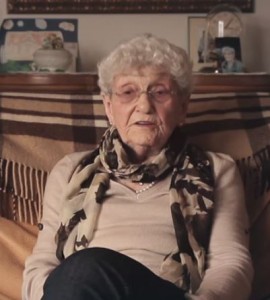
Scene from the documentary film “Kings of Kallstadt”
My last weekend in Freinsheim, after a hike in the Pfalzer Wald, my relatives and I stopped in Kallstadt to enjoy a glass of new wine and slice of onion cake (Neuer Wein und Zwiebelkuchen). Who should join us in the outdoor garden but a celebrity from “Kings of Kallstadt,” a descendant of the Heinz family I believe, who came over to our table and chatted briefly. Small world. Although I’m sorry to say I don’t know her name, she was delightful in person, too.
On my flight home, browsing the Lufthansa magazine, I learned about another King — Elvis Presley.
What is less known about Elvis is that his ancestors came from Germany, their original surname was Pressler. … His surname, Presley, is anglicized from the German name Pressler from Elvis’ ancestor Johann Valentin Pressler who immigrated to the United States from Germany in 1710. Johann Valentin Pressler, a winegrower emigrated to America in 1710. Pressler came from a village in southern Palatinate called Niederhochstadt. Niederhochstadt became Hochstadt sometime during the 250 years after Johann Pressler left it, but there are still many Presslers there, among them a winegrower like Johann Valentin. Johann Valentin first settled in New York and later moved his family to the South.” From Geni.com

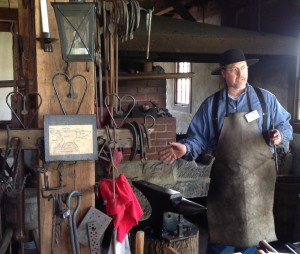


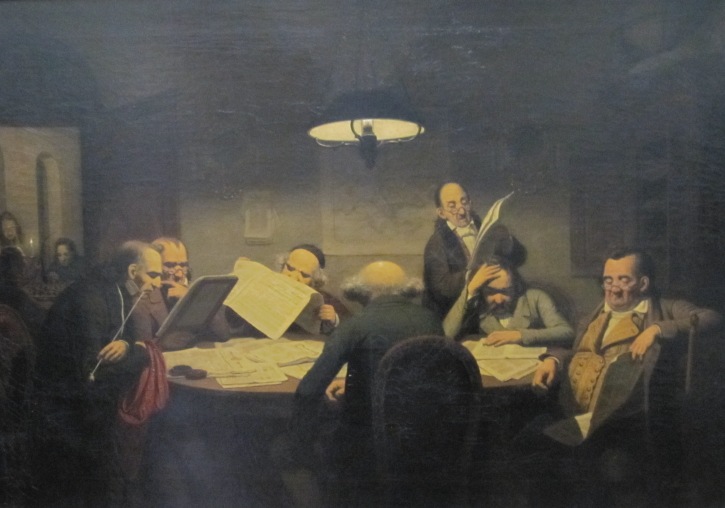
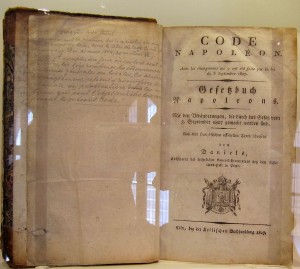
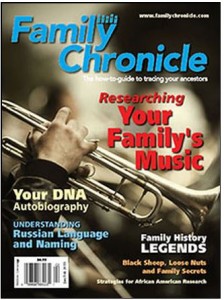
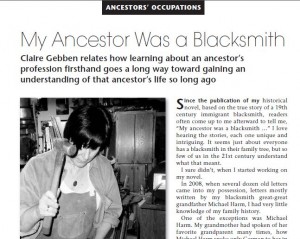
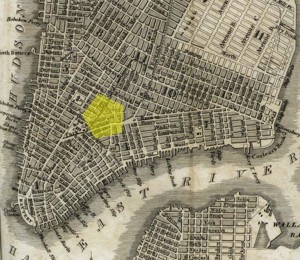
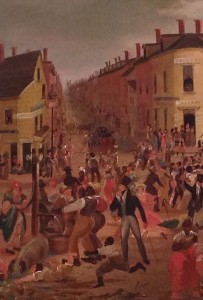 Well, yes and no. The Five Points was the scene of 1857 gang and police riots, and also of 1863 Civil War draft riots. From what I can tell, the ‘Gangs of New York’ movie is a make-believe, mixed up jumble of those two historic events.
Well, yes and no. The Five Points was the scene of 1857 gang and police riots, and also of 1863 Civil War draft riots. From what I can tell, the ‘Gangs of New York’ movie is a make-believe, mixed up jumble of those two historic events.



